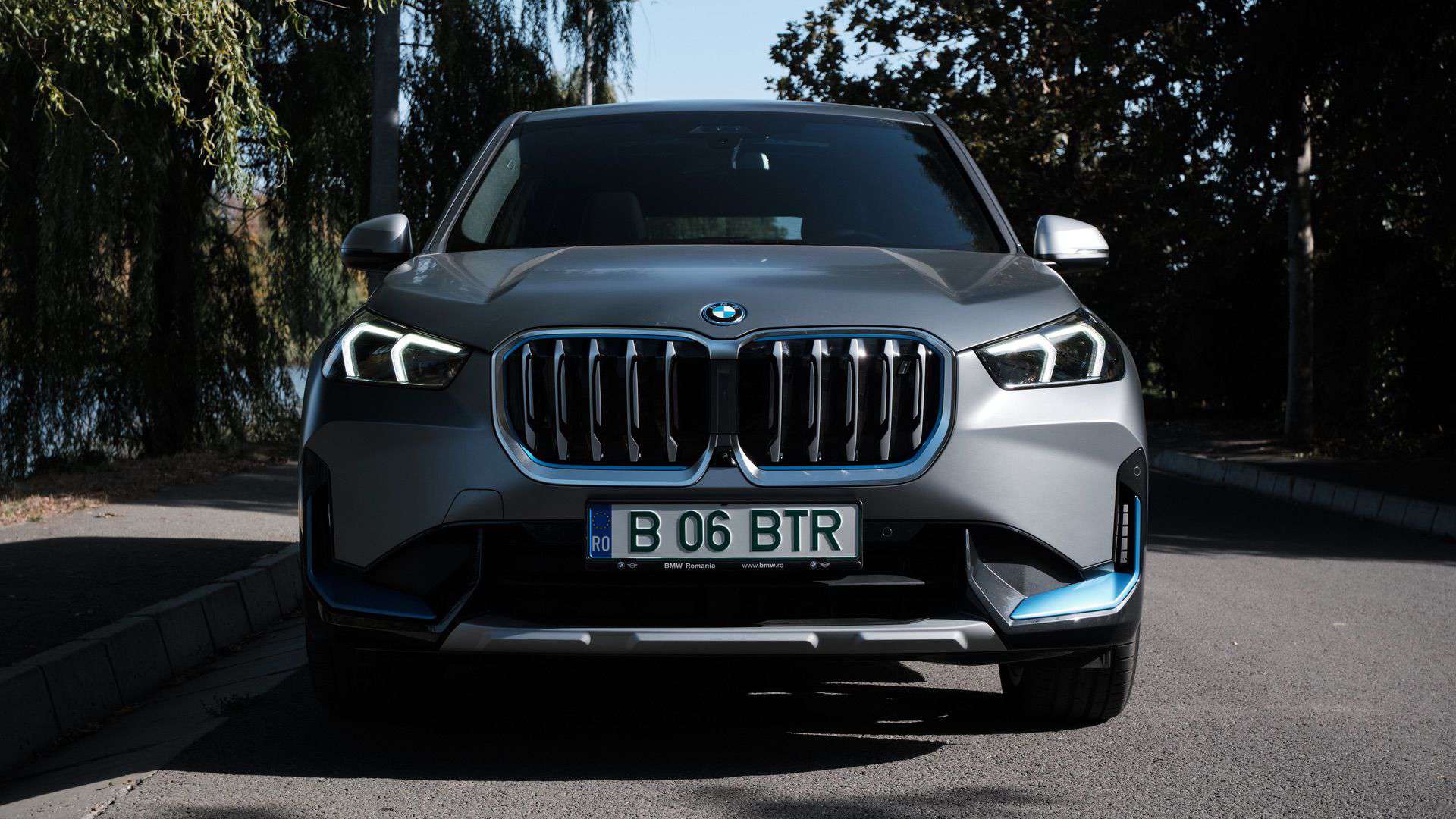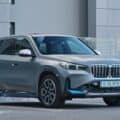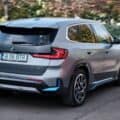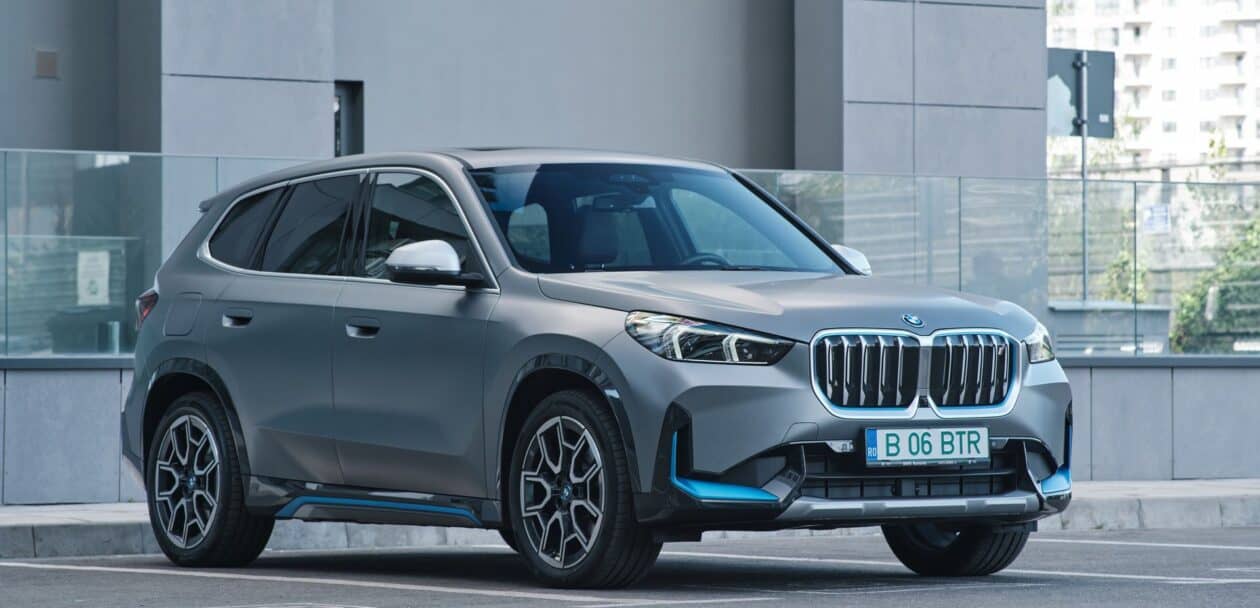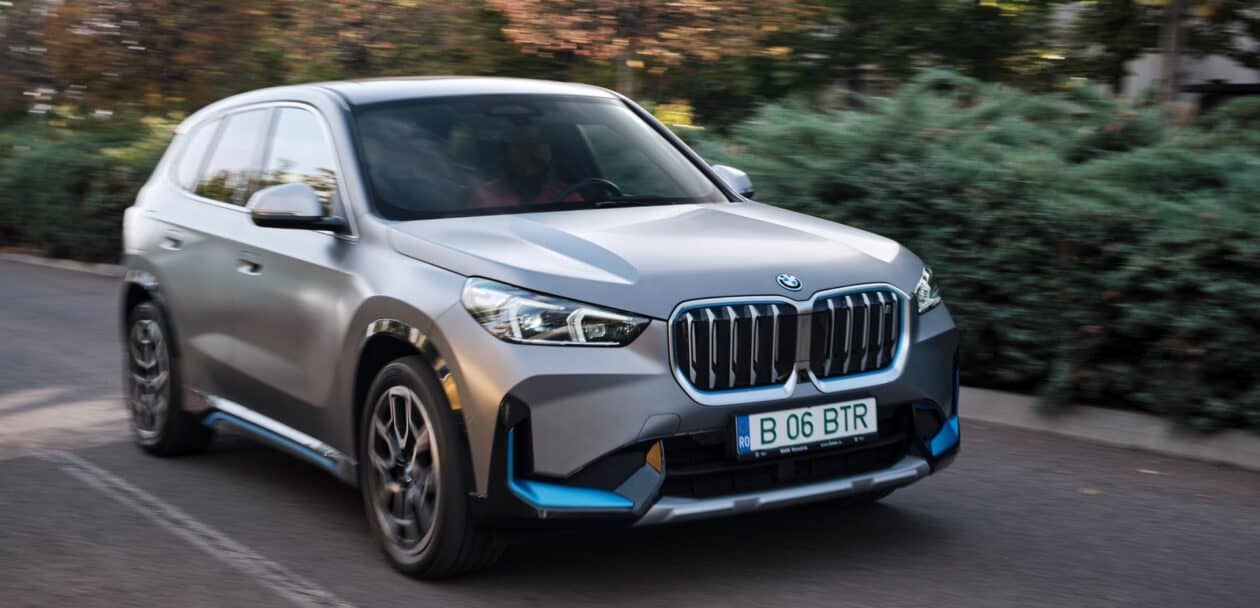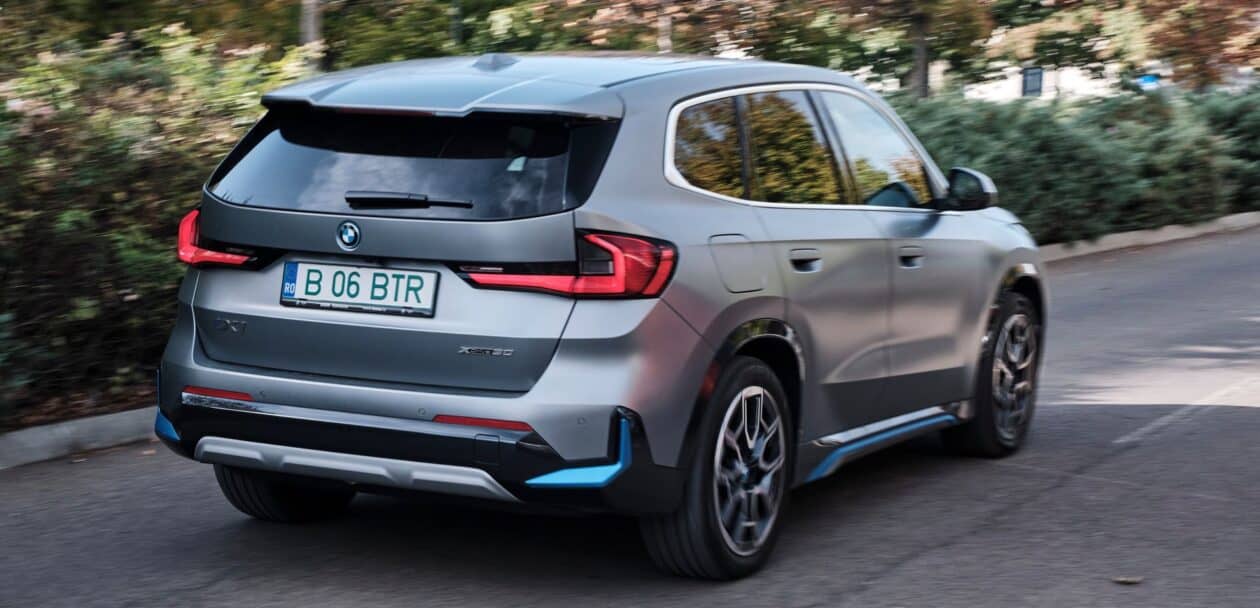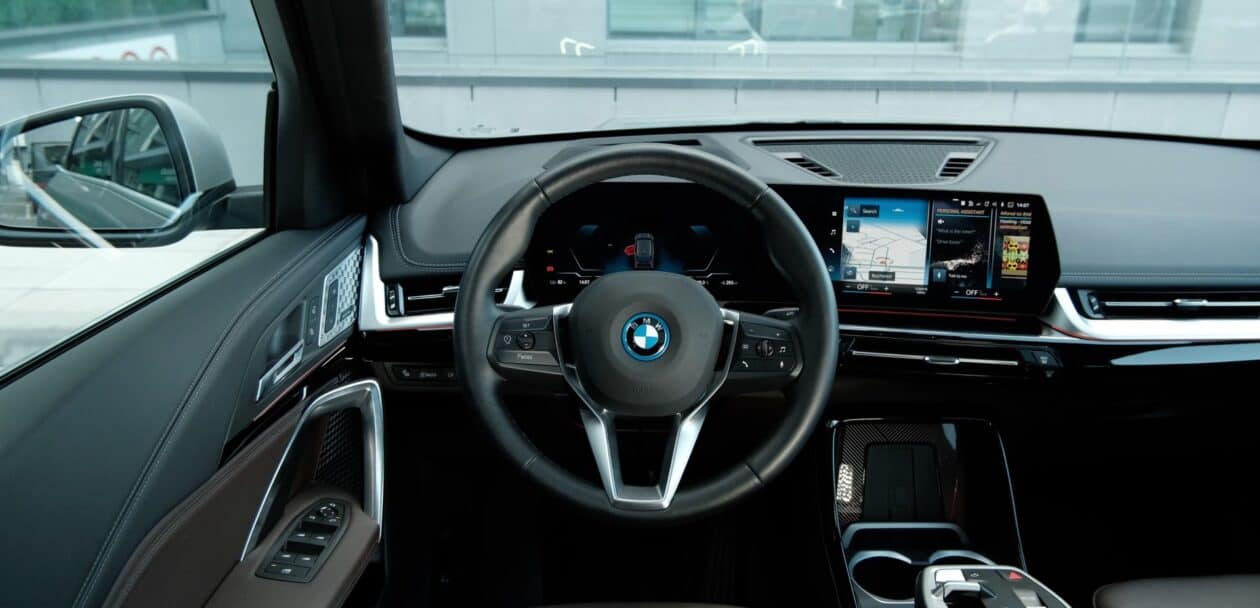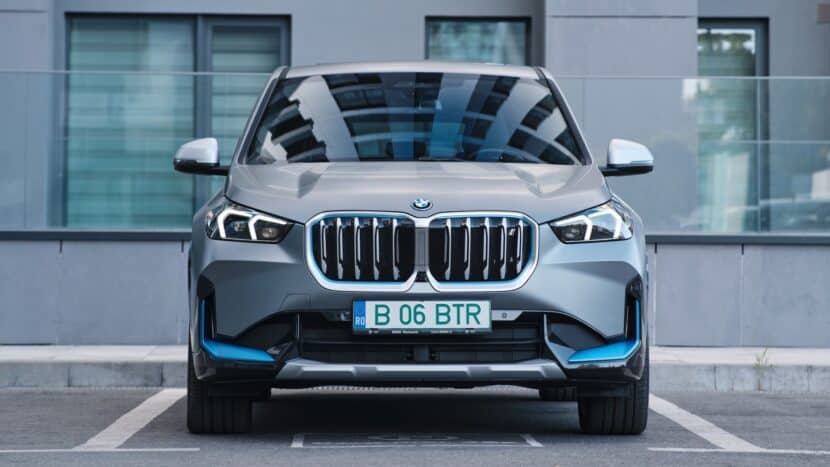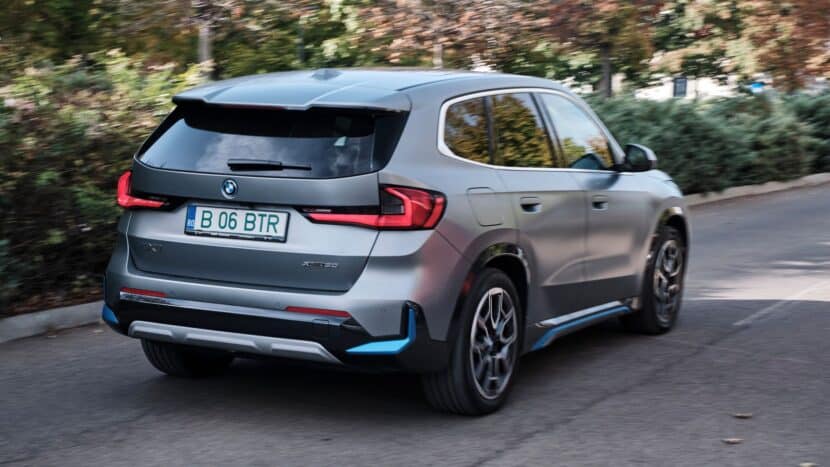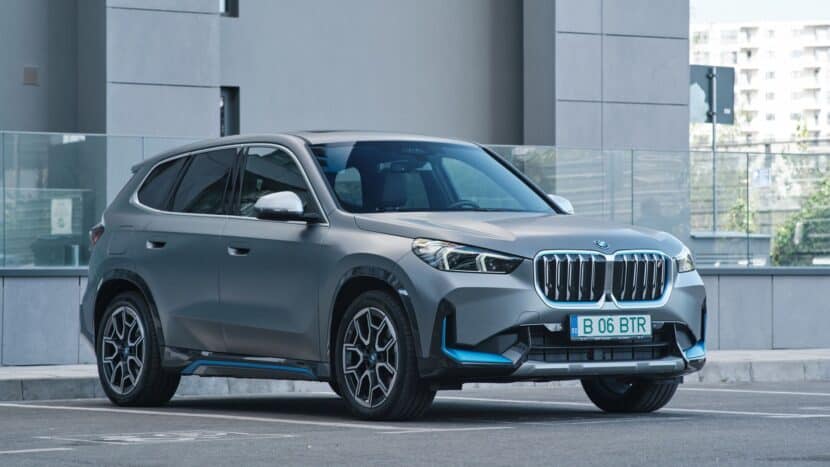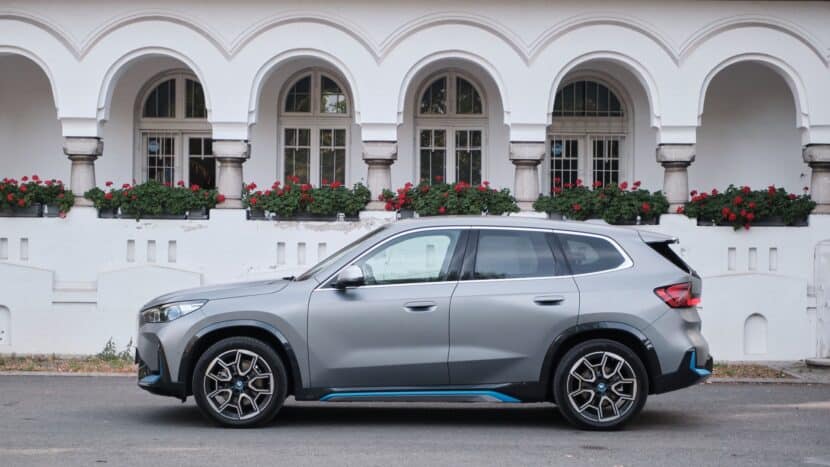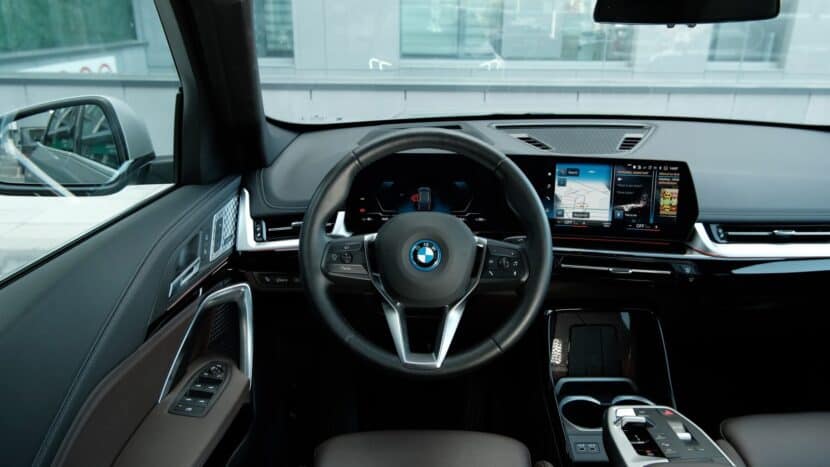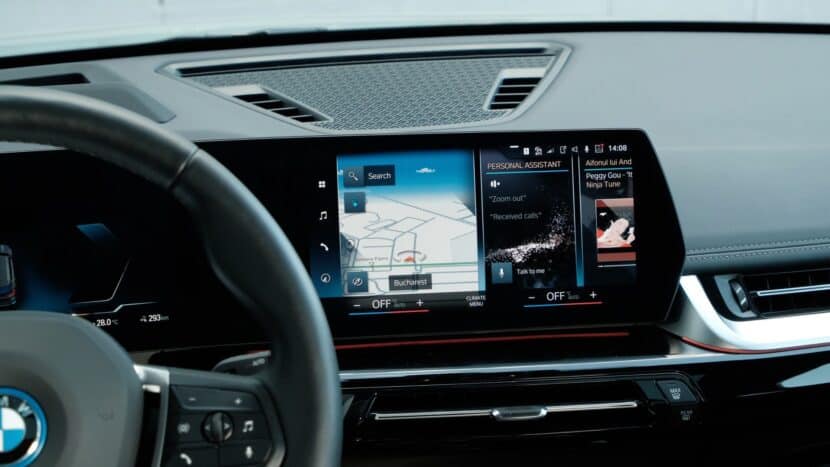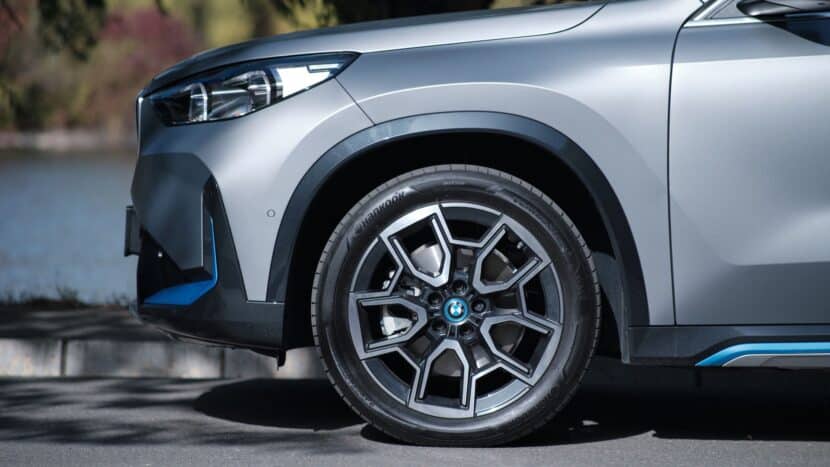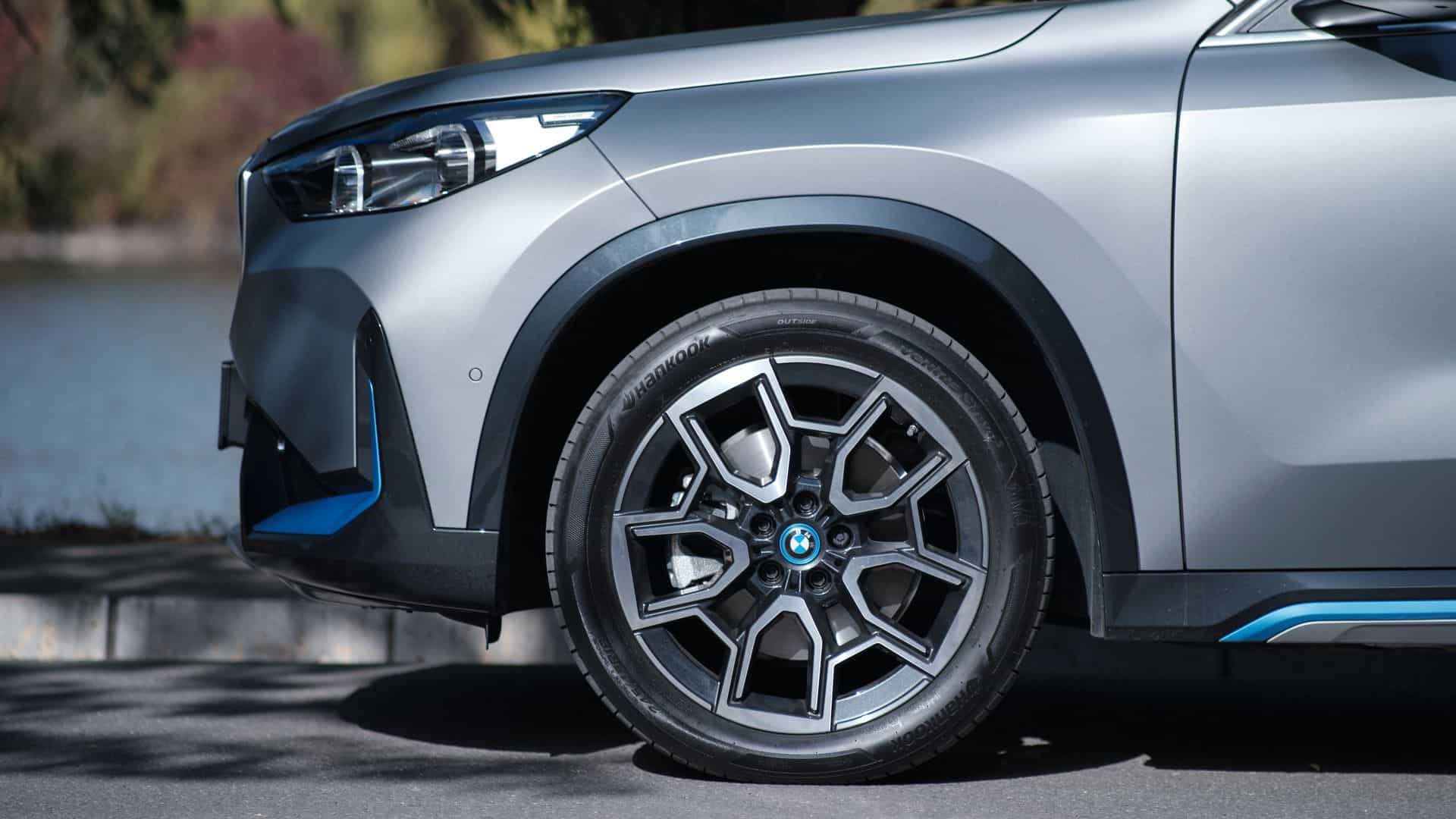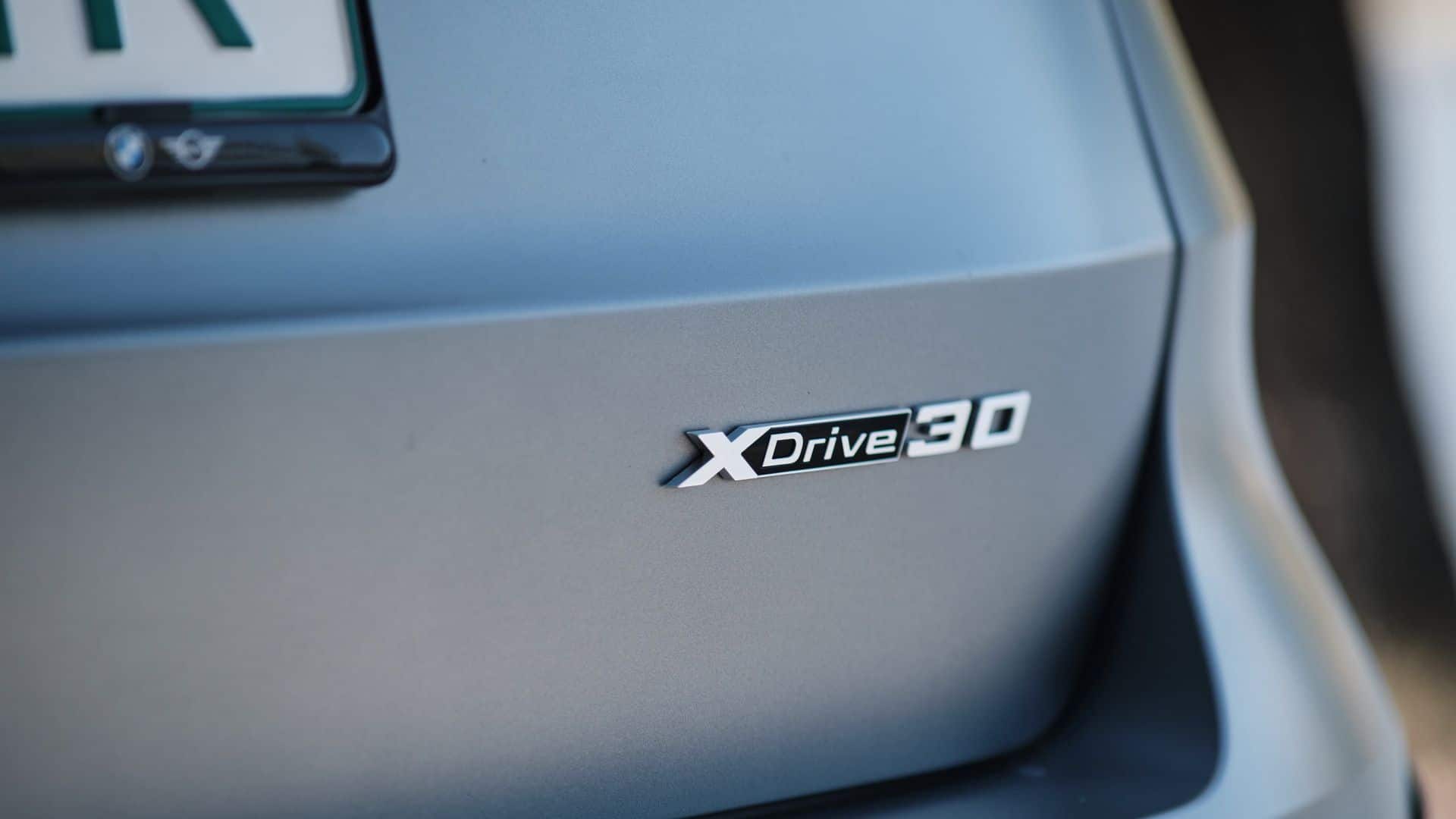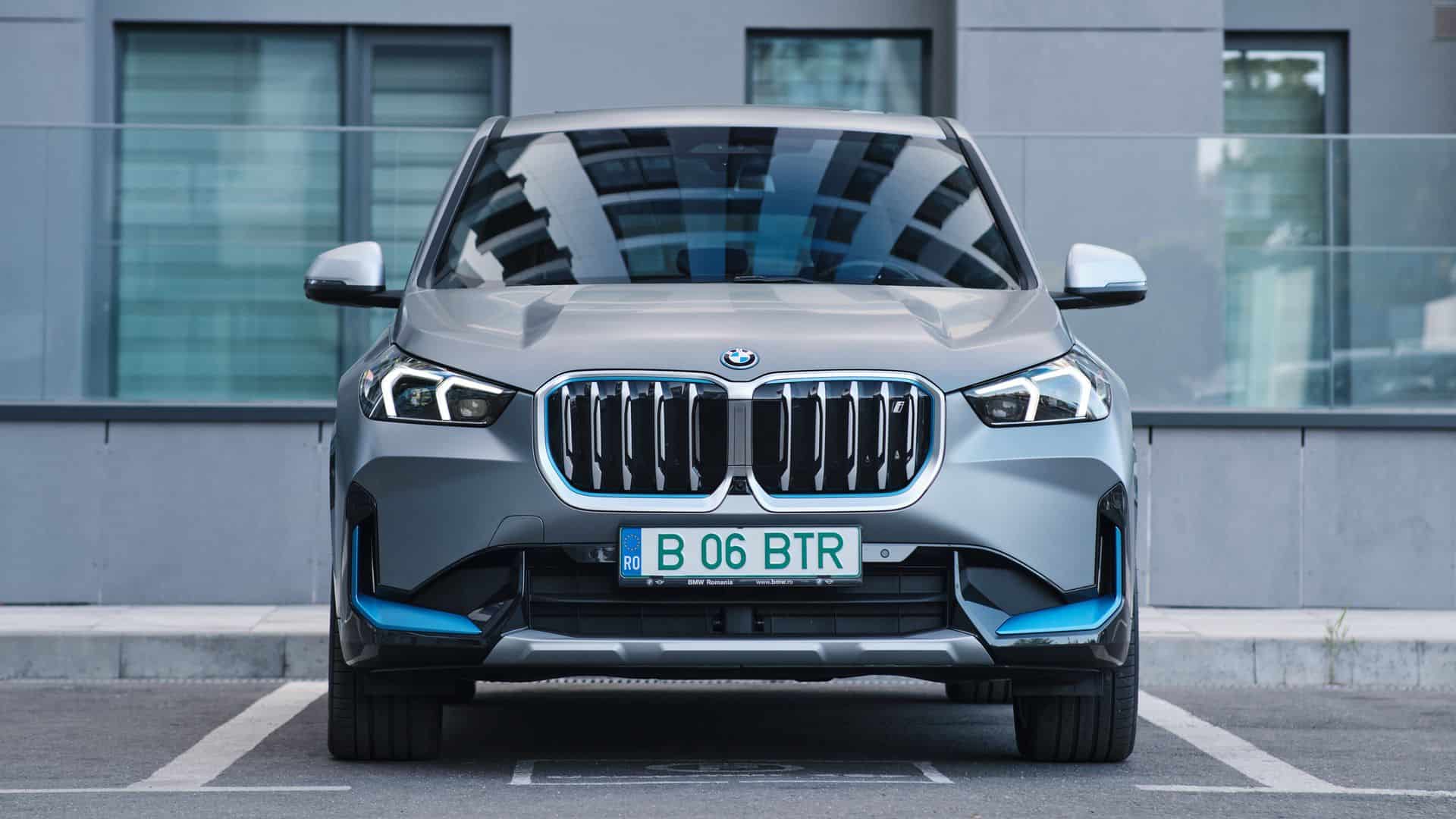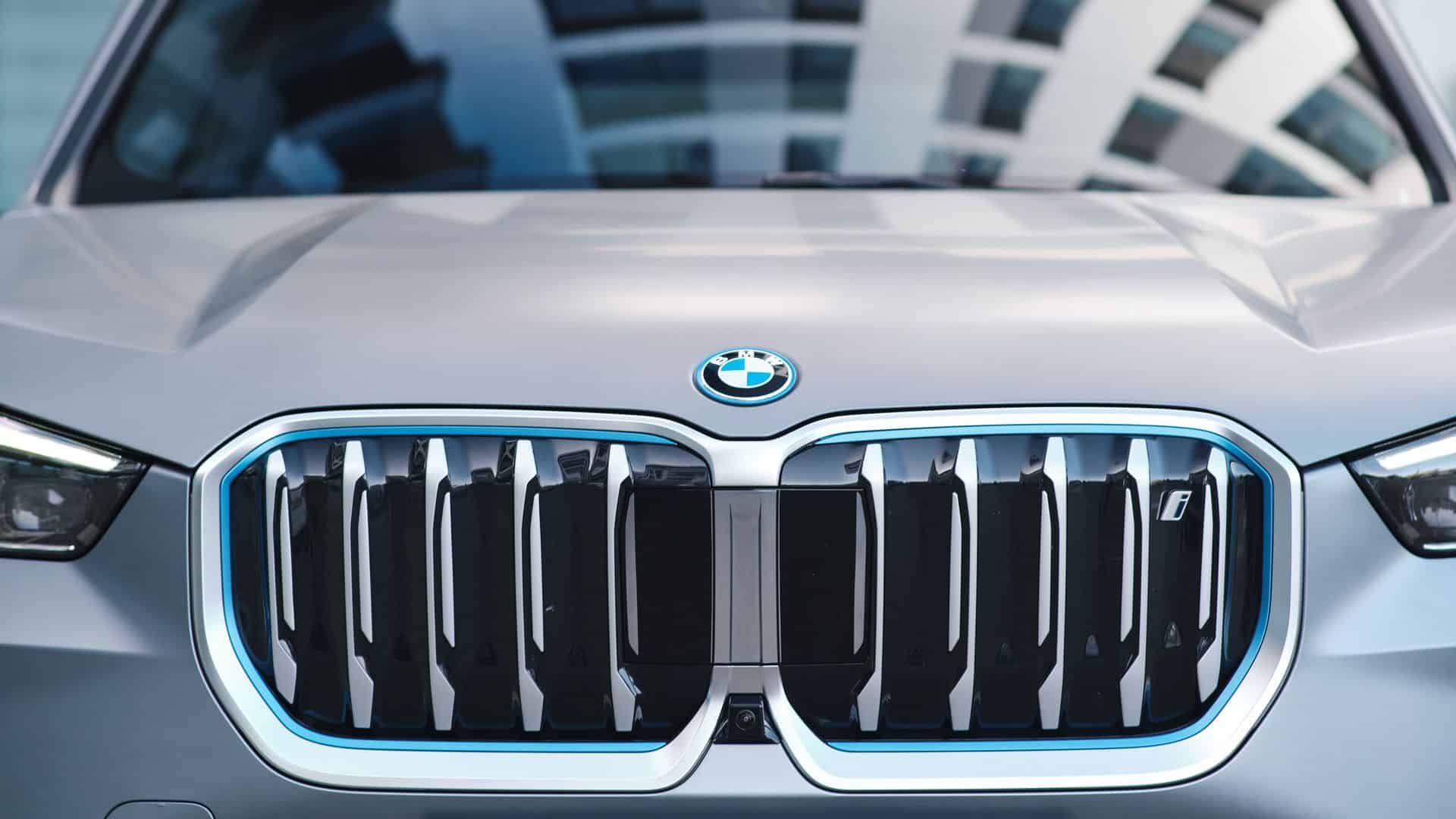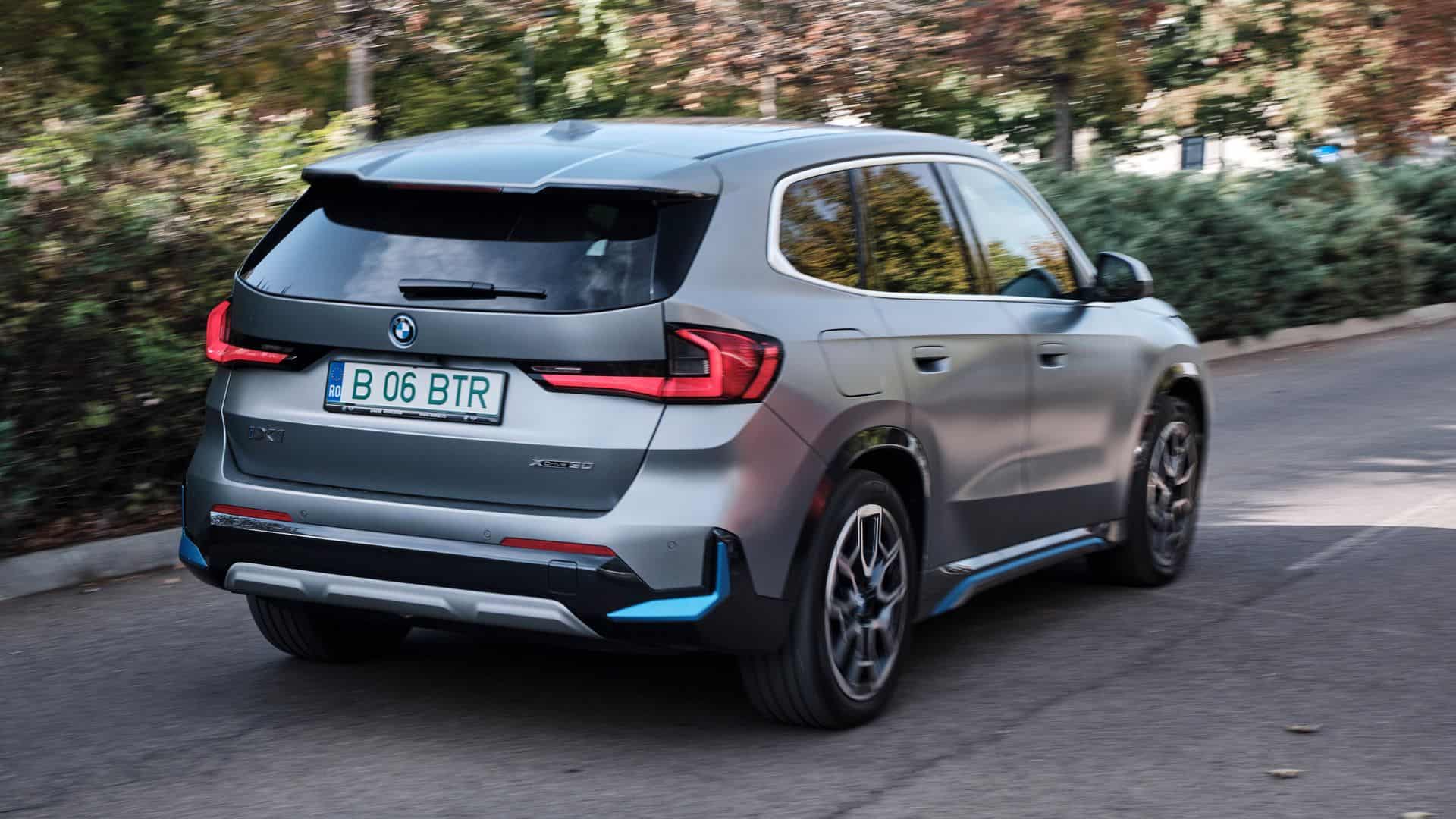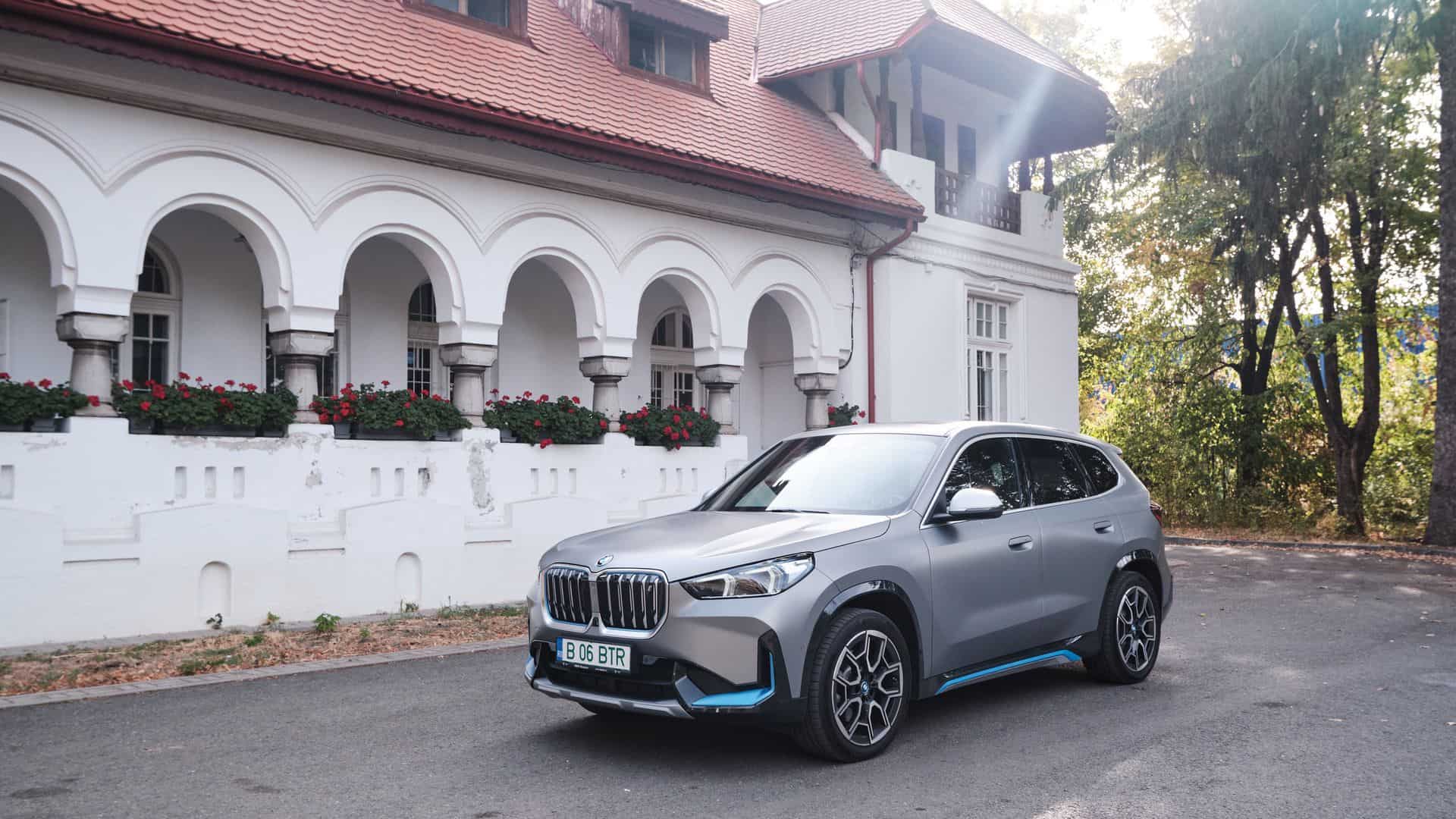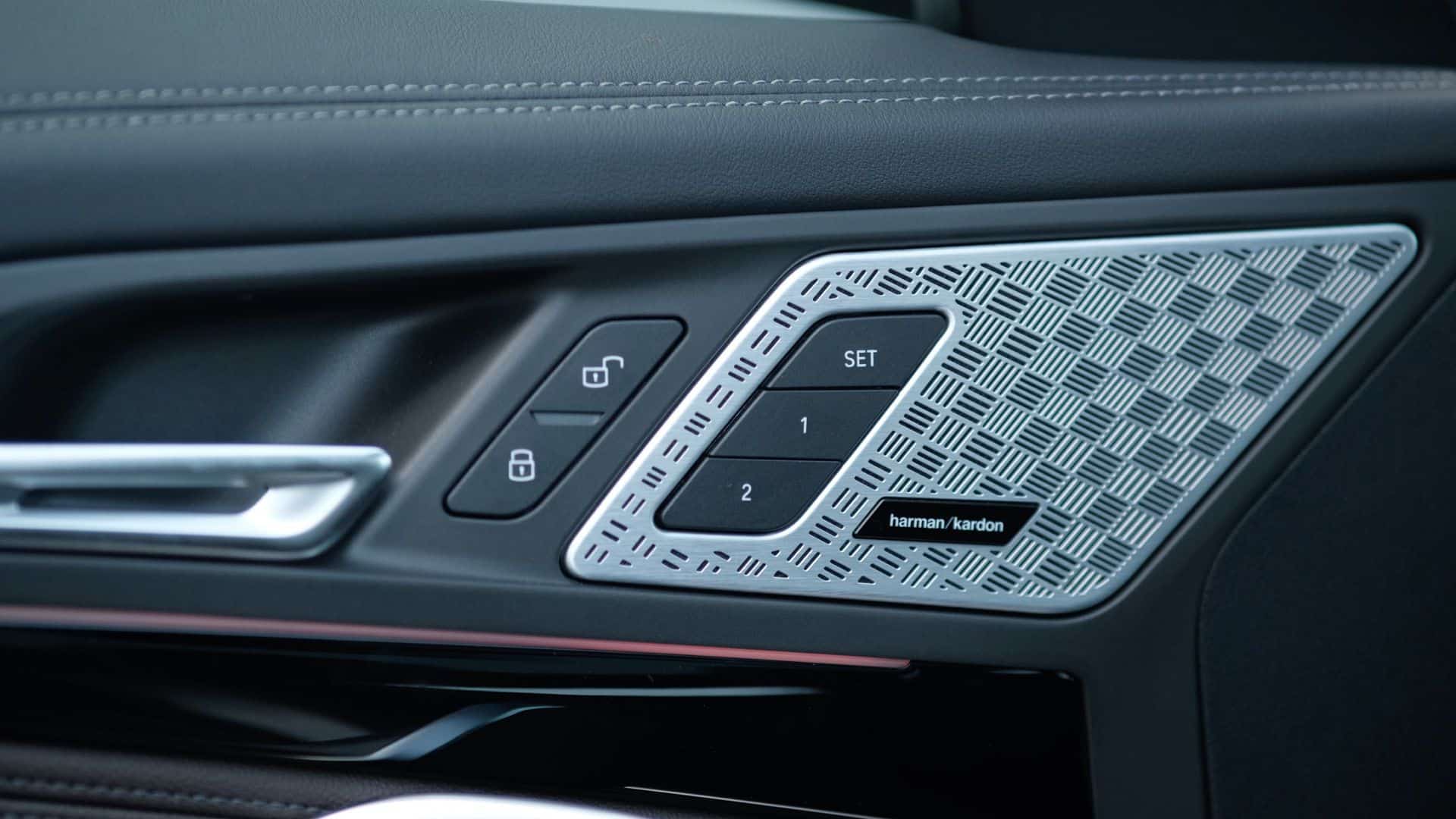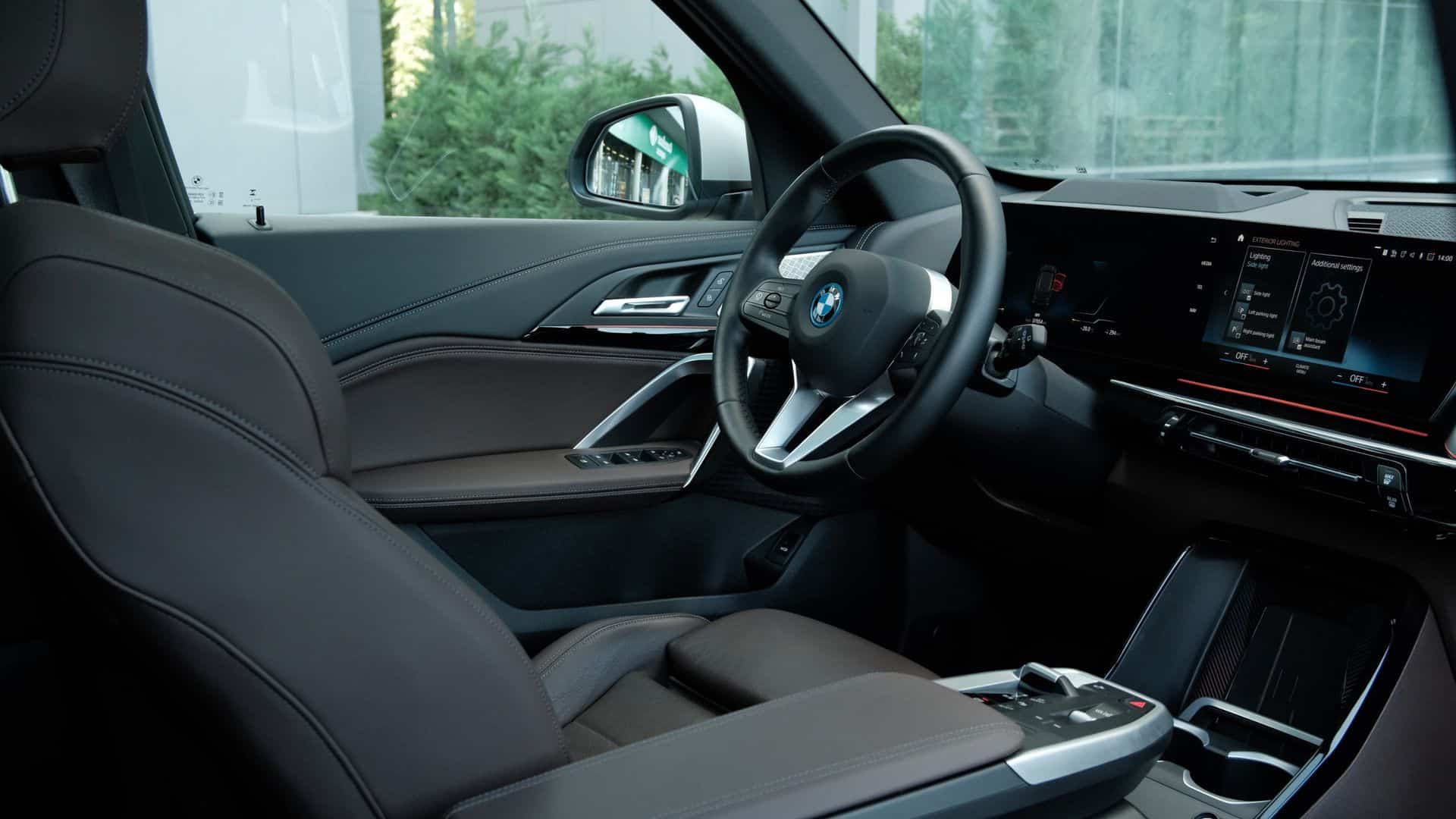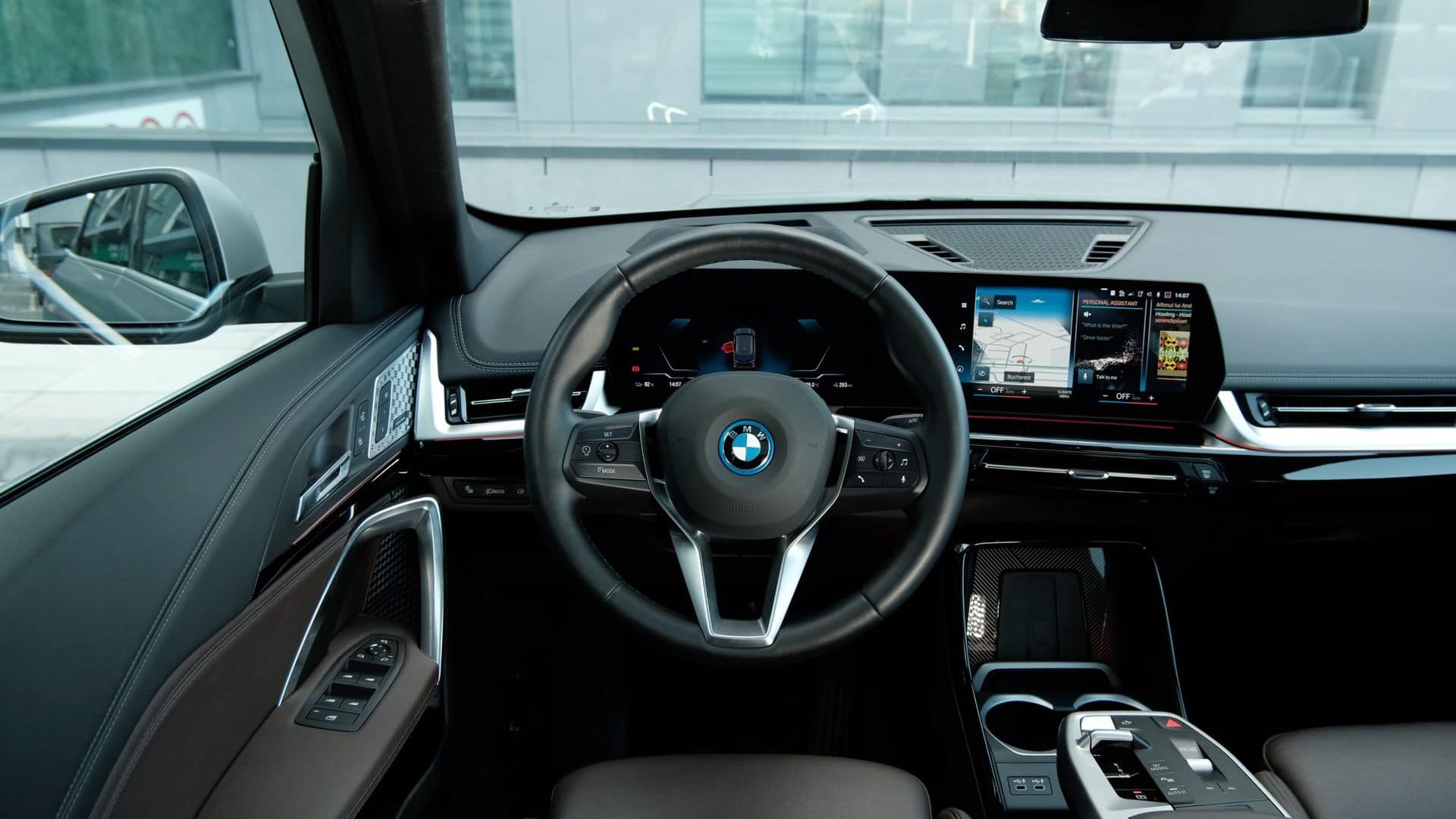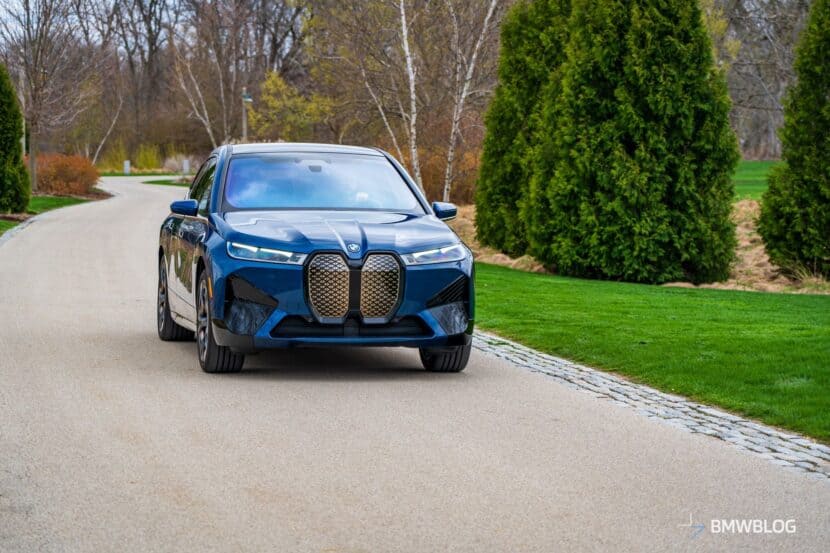BMW announced itself as a pioneer of electric vehicles when it launched the i3 back in 2013. The manufacturer went the extra mile, and instead of just turning one of its existing production vehicles into an EV, it took the radical (and much more expensive) approach of engineering a dedicated electric model from the ground up.
However, in the decade since the i3’s arrival, even though BMW has continued to produce electric vehicles, none of them (except the iX) were bespoke EVs. All the other electric models that it currently offers are just electric versions of internal combustion engine models, and the first-ever BMW iX1 is no exception.
It is based around the third-generation X1, the U11, but instead of a turbo three- or four-cylinder under the hood, it has two electric motors that draw from a medium-sized battery pack. Just one version is currently available, the dual-motor iX1 xDrive30, but it’s very well judged, offering a good blend between performance, comfort, and range.
An eDrive20 single-motor front-wheel drive version of the iX1 is also around the corner, but its availability and pricing have only been confirmed for the UK market. BMW has no plans bringing any version of the iX1 to the United States, but in Germany, the xDrive30 model starts at €55,000 (equal to around $58,000), while the entry-level iX1 eDrive20 variant should undercut it by almost €7,000, with a starting price of around €47,900 ($50,500).
My very well-equipped 2023 BMW iX1 xDrive30 xLine cost over €75,000. This seemed really high for an X1, even one with lots of bells and whistles, yet after driving the vehicle for a few days, I was impressed by its blend of qualities, and it stopped seeming so excessive, although there’s no escaping the fact that there are more affordable rivals.
Ticks All The Important EV Boxes
The main numbers that buyers want to know about when buying an EV today are its long range, fast charging capability, and almost completely silent running. The iX1 is decent in most of these categories and surprisingly good in one of them.
It has a 68-kWh battery pack with a usable capacity of 64.7 kWh, which will grant it a claimed WLTP range of 440 km (278 miles). When I picked up the car from BMW, it was charged to 100 percent, and the indicated range was 373 km (231 miles), quite a bit off the official claim.
3.1 miles/kWh Efficiency
The displayed average electricity consumption since the car was new was around 25 kWh/100 km (2.48 miles/kWh), which explained why the vehicle’s predicted range came nowhere near the WLTP number. During my drive, I don’t think I ever saw the iX1 use less than 20 kWh/100km (3.1 miles/kWh), even though the manufacturer says it should use no more than 18 kWh/100km (3.45 miles/kWh) on average.
You could only realistically come close to the manufacturer-claimed efficiency if you only drove the car in its efficient mode on low-speed roads. If you even think about having some fun in an iX1 xDrive30, it will start going through its electrons at a very rapid rate.
For reference, a comparable Tesla Model Y Long Range (with a dual-motor setup) has a similar claimed efficiency number—16.9 kWh/100km (3.67 miles/kWh)—but it comes much closer to achieving that number in the real world, and between its efficiency, bigger battery, and faster charging the Tesla outclasses the iX1 in virtually all EV-related categories.
When it comes to charging, the iX1 provides a decent speed—up to 130 kW from a sufficiently powerful DC fast charger which will bring the battery from 10 to 80 percent in 29 minutes—and a standard 11 kW on-board charger that can be upgraded to a 22 kW unit that cuts charging time from flat to full from 6.3 hours to around 4 hours.
If all you have is a 3.6 kW wall box, it will take a whole day to fully charge an iX1.
The iX1 does surprisingly well when it comes to sound insulation. It’s much better than the Model Y, especially at speed, and it’s probably the most refined electric crossover in its size class when it comes to high-speed refinement. The power delivery is instant, yet it doesn’t feel jarring, and occupants should find the iX1’s cabin a very quiet and pleasant place to spend time on longer journeys.
Strong Surge of Power
SUVs and crossovers are never my first choice of vehicle, yet it’s hard not to be seduced by an iX1 xDrive30’s power, comfort, and cruising ability. With adaptive dampers and interior comfort options, it really punches above its weight when it comes to making the driver and passengers feel special. This feeling was unexpected, but it’s a positive trait that will make the relatively high price an easier pill to swallow.
The pair of 190-horsepower electric motors that motivate the 2023 BMW iX1 xDrive30 are what sold it for me, since they imbue the vehicle with real pace. Together, they produce 314 horsepower and 364 lb-ft (494 Nm) of torque, which is enough to hurl the 4,430-pound (2,010-kg) iX1 to 60 mph in 5.3 seconds (0 to 100 km/h in 5.6 seconds). It is pegged back at the top end, though, with a limited top speed of 112 mph (200 km/h).
Accelerating hard from a standstill in an iX1 xDrive30 is a surprisingly dramatic experience, especially if you have the Hans Zimmer-designed Iconic Sounds enabled. The claimed sprint time to 60 mph really doesn’t do the all-wheel drive iX1 justice; it feels even quicker than the figures suggest, and it’s also remarkably punchy in-gear too. The powertrain is the sportiest part of the package, though, as the suspension is concentrated on comfort more than anything else.
Wafting Is Possible
Being able to waft in comfort is a trait usually reserved for larger and more luxurious vehicles than an X1, yet in the iX1 guise with adaptive dampers, the vehicle was remarkably cosseting. With the suspension in its most comfortable settings, the iX1 has the surprising power of being able to turn bumpy roads into smooth ones. Even if the vehicle rides on 19-inch wheels (like my tester) and you put it in Sport mode, comfort levels remain remarkably high.
Driving over poor-quality tarmac or unpaved roads, the iX1 is really good at soaking up the bumps and not transmitting the forces into the cabin. If there was one thing that was especially impressive, this would be ride quality, which goes really well coupled with the iX1’s excellent sound insulation.
Outside Evolution, Inside Revolution
The iX1 is based on the U11 X1, so it has that vehicle’s evolutionary exterior design. The U11 has to be one of the least polarizing-looking models in BMW’s current lineup, and the iX1’s extra blue details on the outside do little to upset the sobriety of the design.
It just looks like an updated and sharpened-up F48 X1, complete with flush door handles and some of the most dramatic rear light designs of any current BMW SUV.
The latest X1 has grown slightly compared to the F48 it replaces, but because its design is more angular and less rounded, it appears considerably bigger. At a glance, you might even mistake it for the larger X3; parking a U11 next to an F48 dispels the impression that the new car is considerably larger, but when you see one in any other context, it really does look like something from the class above.
More Premium Than Ever Before
Stepping aboard the iX1, especially a very well-equipped one like my press fleet example that had over €20,000 in options, it will not look or feel like an entry-level model. Front occupants are treated to a great minimalist dashboard dominated by a set of curved screens (just over 10 inches in size each) that wrap around the driver.
Just like in the BMW 2 Series Active Tourer with which it is related, the iX1 loses most of its physical climate controls. Just a couple of defrost buttons are left, and to access any other climate-related functions, you will need to go into a menu on the infotainment screen.
This may not be the best solution for fiddling with climate controls while driving, but it does make the dashboard look exceptionally clean and uncluttered. My tester had SensaTec on top of the front door panels and the dashboard, and combined with the brown leather upholstery present on the optional sport seats and the lower part of the doors, the ambiance was very similar to what you would experience in a larger and much more expensive BMW.
The same can’t be said for passengers in the back, who are treated to scratchy plastic door cards, no separate climate controls, and not much to play with. It’s in the rear that even a well-equipped iX1 betrays its roots as a more affordable car.
Wheel Size Matters
My tester had a set of 19-inch Style 867 two-tone V-spoke wheels that also helped it look bigger. The car comes with 17-inch wheels as standard, but it needs at least 18-inch wheels to look good. BMW offers wheels up to 20 inches for the iX1, but my tester’s 19-inch set struck a great balance between looks and ride comfort.
Going for the largest 20-inch wheels will negatively affect comfort, although with the iX1’s relatively soft suspension, the experience aboard the vehicle should still remain pleasant. If comfort is your main priority when speccing an iX1, you can stick with the standard set of 18-inch wheels, which still look pretty good and should yield notable comfort gains; try to test drive 2023 BMW iX1s with different wheel sizes before you order one.
Steering Doesn’t Feel Great
In all modes except Sport, the iX1’s steering feels extremely light. This doesn’t instill the most confidence to drive the vehicle quickly around a twisty road. Even in Sport, when the steering weights up and the adaptive dampers become stiffer, the vehicle doesn’t edge you on to have fun trying to find the limits of grip.
The steering itself is sharp and quite direct, and when it loads up, it does transmit some feel back to your fingertips, but overall, it just didn’t enthrall me like some other BMW steering racks have. Even the 2 Series Active Tourer or the MINI Countryman felt better in this respect, so this is probably down to the special tuning that BMW gave this EV, which is considerably heavier than ICE variants.
If you want to put the power down early on corner exit, the 2023 BMW iX1 will immediately reveal its front-wheel drive nature, as it’s the front wheels that will get overpowered by torque. This is a very similar experience to that provided by the iX1’s biggest rival, the Mercedes-Benz EQA 350 4Matic, and it’s a trait that doesn’t help either of these vehicles feel especially sporty to drive.
Shared Platform Quibbles
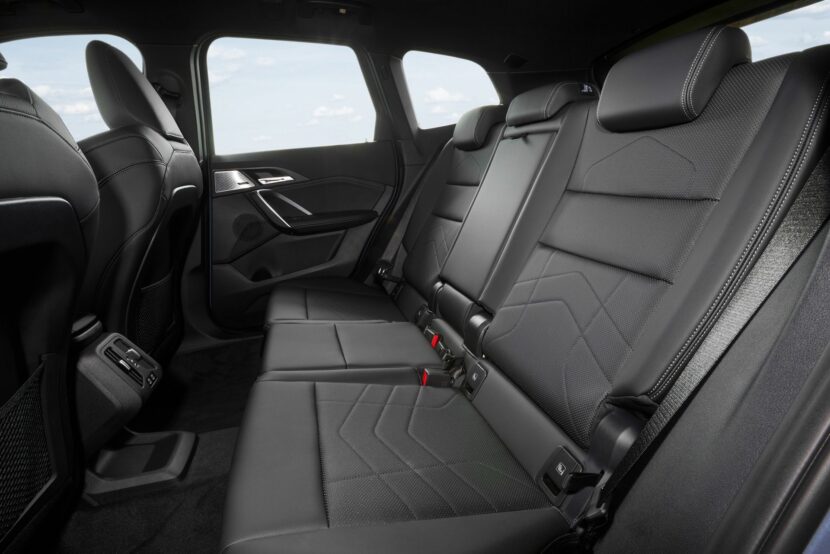
Since it’s underpinned by the UKL2 architecture, the iX1 shares its platform with combustion models. Turning an ICE car into an EV brings some drawbacks, and most of the usual ones are present in the iX1.
For instance, it’s not quite as spacious and practical as its fuel-burning cousin. The maximum trunk load volume drops from 540 liters in the X1 to 490 liters in the iX1. This is because the rear motor takes up some of the underfloor space in the cargo area; intrusion from the battery pack could also be behind it.
The iX1 also loses the X1’s sliding second row of seats. You can still recline the rear backrests in the electric model, but they are fixed in place. This isn’t particularly bothersome because the iX1 is quite a small vehicle, so sliding the rear bench forward makes it almost unusable for carrying adult passengers in the back.
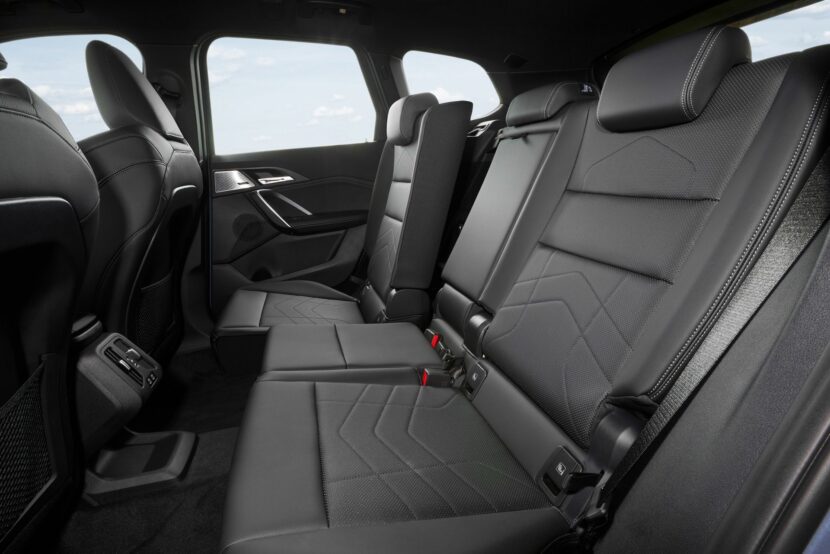
Rear occupants will also find their knees pushed up in the EV more than in the regular X1. This is because the battery is in the lower part of the vehicle, and because of its height, the floor has been pushed up slightly, resulting in lower levels of backseat room. It’s not quite as bad as it is in the electric Mercedes-Benz EQA when comparing that to the combustion GLA, but it’s definitely noticeable.
Since Tesla introduced its EVs that had a front trunk (which the manufacturer called the “frunk”), electric vehicles have been judged on whether or not they have one. The importance of this feature varies depending on who you ask, yet an additional storage area in the front of the vehicle is good to have.
The iX1 doesn’t have a frunk, so EV aficionados can point and laugh when looking at the mess of plumbing and cables hidden under the very neat i-branded plastic cover that greets you when you pop the hood. BMW clearly could have cleaned all of that up and created a usable storage place, but it looks like it couldn’t be bothered, pointing to research suggesting buyers don’t want a frunk…
Worth Considering
Even though the BMW iX1 is a derivative model and not a bespoke EV, with the downsides that it brings, it is by no means a premium electric crossover to avoid. It looks great, especially in my tester’s Frozen Grey Pure finish; its interior looks really premium if you don’t stick to the base trim, comfort levels will impress you, and its straight-line pace in xDrive30 guise is remarkable.
Better than Tesla Model Y?
It’s not a vehicle designed to steal buyers away from Tesla or any dedicated EV brand, for that matter. The iX1 is just an electric variant of an already very successful and talented crossover. When viewed in that light, the iX1 makes a lot of sense, and it actually starts to make sense.
However, with a real-world range of around 320 km (200 miles), it is far behind the most talented electric crossovers that ride on bespoke EV platforms. It also lags behind these bespoke EVs in terms of performance, the ability to give buyers multiple battery pack sizes to choose from, and charging speed.
The iX1 will only charge at up to 130 kW from a DC fast charger, which means it’s nowhere near the top of the class. Its standard 11 kW AC on-board charger can be upgraded to 22 kW, a feature not all electric models have, so this does claw back some EV kudos points for the iX1.
Ultimately, there are bigger, faster, and longer-range electric crossovers on the market, especially for the money, but the 2023 BMW iX1 has enough talents to hold its own without being top-of-the-class.
2023 BMW iX1
Exterior Appeal - 8
Interior Quality - 8
Steering Feedback - 7
Performance - 7.5
Handling - 7.5
BMWness/Ultimate Driving Machine - 7.5
Price Point - 7
7.5
Even though the 2023 BMW iX1 is a derivative model and not a bespoke EV, with the downsides that it brings, it is by no means a premium electric crossover to avoid.


